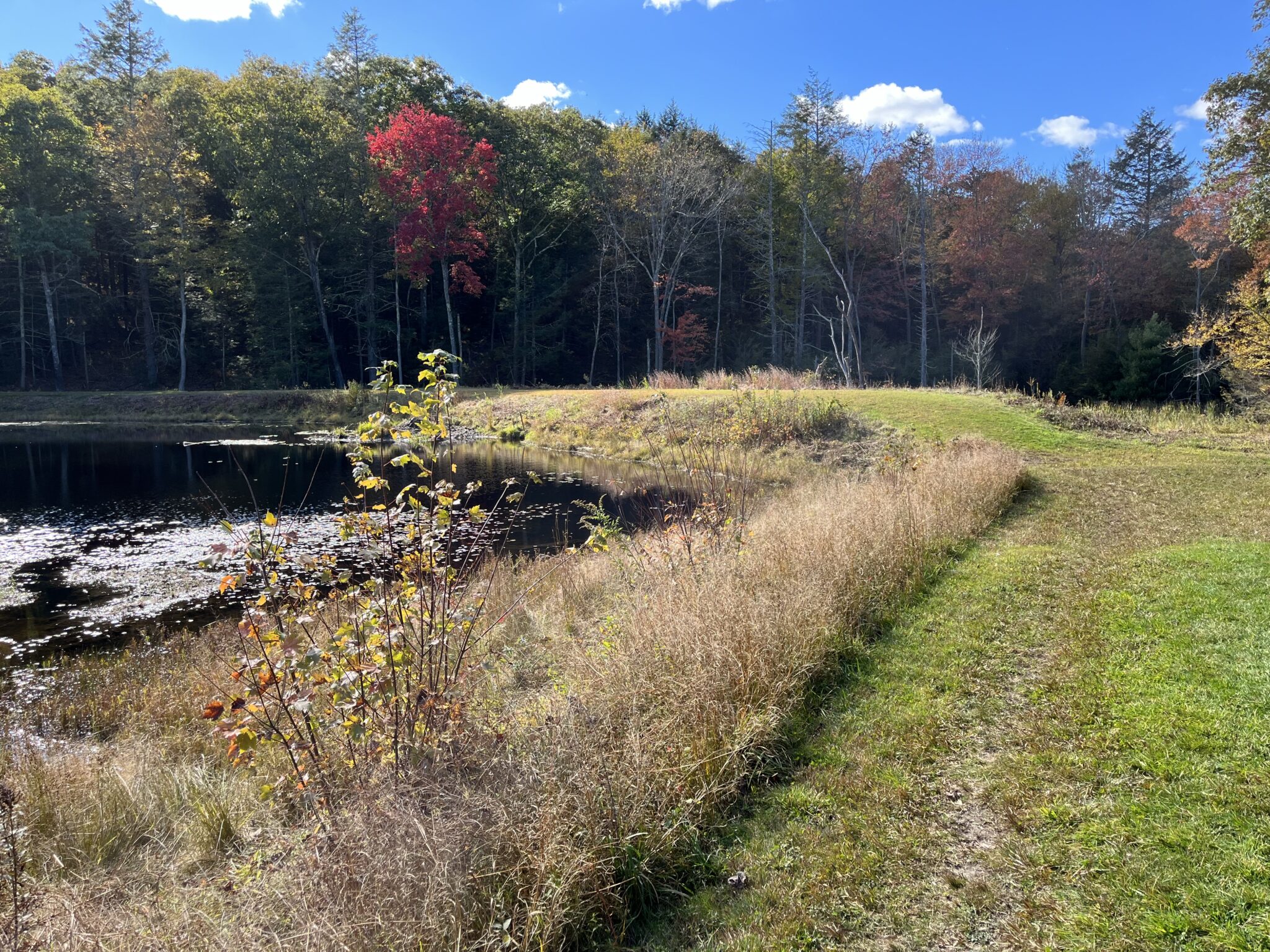
The Trustees of Reservations today unveiled a new website to provide information to residents of the Monson area about the planned removal of Lunden Pond Dam at Peaked Mountain Reservation.
The website, intended to keep area residents informed of progress on the dam removal, can be found at www.thetrustees.org/lundenponddam. The webpage contains current information, frequently asked questions, and a way for interested parties to submit their email address to be kept informed of progress.
The dam, located on the Millers Forest Tract of Peaked Mountain, was identified during a statewide assessment of dams on Trustees’ properties as having existing safety concerns. Also taken into consideration was whether removal of the dam would improve aquatic connectivity and other ecological functions.
Removal of the Lunden Pond Dam would involve several years of work, according to Julie Richburg, lead inland ecologist for The Trustees.
“We are currently doing outreach with the town of Monson, who partnered with us on the recently completed feasibility analysis funded by a Division of Ecological Restoration (DER) grant awarded to the town,” Richburg said. “We have been meeting with state officials and key stakeholders and plan a series of community outreach meetings to update our progress as dam removal design, permitting, and implementation take place over the next three to five years.”
Removal of the dam is based on two compelling reasons: hazard mitigation and ecological restoration.
Lunden Pond is considered a Significant Hazard Structure by the state due to the downstream areas that would be impacted by catastrophic failure of the dam, including private residences, town roadways, and a gas pipeline. Recent assessments of the dam have found significant structural issues that could lead to failure of the dam. Dam removal would proactively eliminate the risk of dam failure during a large storm with powerful floodwaters.
Removing the dam would also reestablish historical connectivity of the stream ecosystem, allowing upstream passage of aquatic species, including those dependent on coldwater streams, such as Eastern brook trout and Eastern pearlshell mussels.
Downstream of the dam, Temple Brook is designated as a Coldwater Fish Resource by the Massachusetts Division of Fisheries and Wildlife. Removal of the dam will restore the vegetated wetland habitat of the impoundment and improve water quality flowing from this high watershed area of Temple Brook.
Research shows that before the dam was constructed, the area was a large, vegetated wetland complex with areas of standing water. Dam removal will restore the natural river flows and connectivity of the stream ecosystem. There will no longer be a large pond, but the remaining wetland will provide a variety of habitat types and ample opportunities for wildlife viewing.
While removal of the dam would change the current character of Lunden Pond, The Trustees is committed to maintaining the loop trail around what would be the restored wetland complex following dam removal. Some current visitors also fish at Lunden Pond, and The Trustees is committed to restoring natural fish habitat through this restoration project.
More about The Trustees
Founded by landscape architect Charles Eliot in 1891, The Trustees has, for more than 130 years, been a catalyst for important ideas, endeavors, and progress in Massachusetts. As a steward of distinctive and dynamic places of both historic and cultural value, The Trustees is the one of the oldest preservation and conservation organizations, and its landscapes and landmarks continue to inspire discussion, innovation, and action today as they did in the past. We are a nonprofit, supported by members, friends and donors and our more than 120 sites are destinations for residents, members, and visitors alike, welcoming over 2 million of guests annually. www.thetrustees.org.